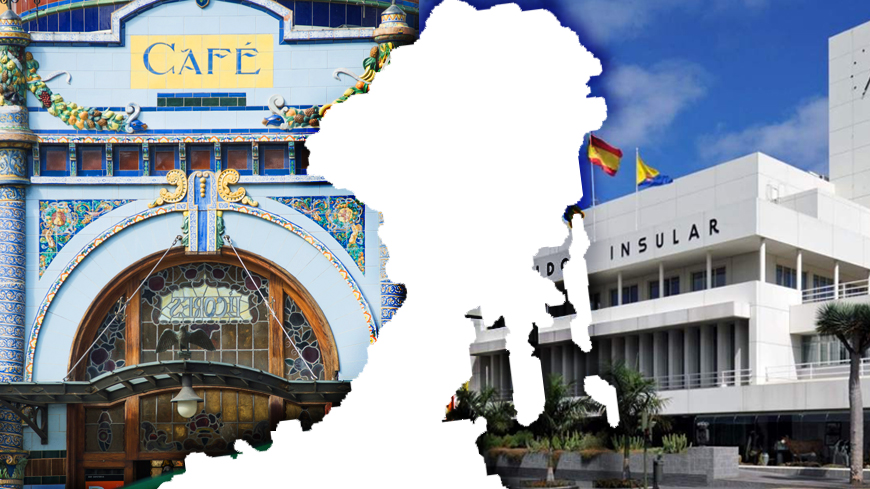Undoubtedly the history of a place or a city is reflected in a great extent in its buildings and in the architectural style of its streets. The city of Las Palmas de Gran Canaria, founded more than 500 years ago, has infrastructures of different historical periods and different architectural styles typical of each era. The most representative construction of the city is the Cathedral of Santa Ana, a work that began in 1500 and has a neoclassical façade.
At the beginning of the XX, the Canary Islands and especially Las Palmas de Gran Canaria live an architectural splendour mainly with two styles, modernism and rationalism. Both architectural movements gave rise to a multitude of symbolic buildings that are part of the city’s heritage. Therefore the city council of Las Palmas de Gran Canaria has designed two different routes for the visitor to learn more about those buildings representing each architectural style.
On modernism, it is noteworthy that it was originated at the beginning of the 20th century throughout Europe and that it presents as its main characteristics the beautiful vegetal ornamentation, which can be stylized with a naturalistic line, the use of the sinuous curve line in the drawings of the façades and the profusion of decorative elements. In Gran Canaria is characterized by the influences received by English citizens residing in the islands, acquiring a unique and different framework, becoming the greatest exponent of Spanish modernism along with Catalan modernism.
In the modernist route designed by the local city council, the works of the Canary artist Néstor Martín – Fernández de la Torre (1887-1938) stand out, which is considered the most important representative of modernism and creator of a particular style, the Neocanario, which reflected in the painting, sculpture, architecture and fashion elements of the Canary Islands identity. During the tour we can find magnificent examples of this architectural style such as the facades of the Calle Mayor de Triana, the San Telmo Park kiosk, the interior of the Gabinete Literario and the surroundings of the Plaza Santa Ana.
Regarding the rationalism (modernism-bauhaus), its beginnings go back to 1920. It is a style where all the decorative elements and accessories disappear. In addition, new materials are used and the balance of straight lines predominates, playing with the volumes, the horizontality and, above all, the sobriety and simplicity. In Las Palmas de Gran Canaria, this architectural style had its main location in the neighbourhood of Ciudad Jardín, which in the 1930s became a residential area for middle and upper-class families in the city. Also, under this rationalist influence numerous public buildings were designed.
In the route of rationalist (modernism-bauhaus) buildings proposed by the city council, you will be able to observe the emblematic buildings of this architectural current such as the Casa Palacio del Cabildo, the Cuyás Theater, the Hotel Parque, as well as the detached houses located in the Ciudad Jardín area mentioned above.
In the following links you can find the details of the routes and in the following link you can access more information:




